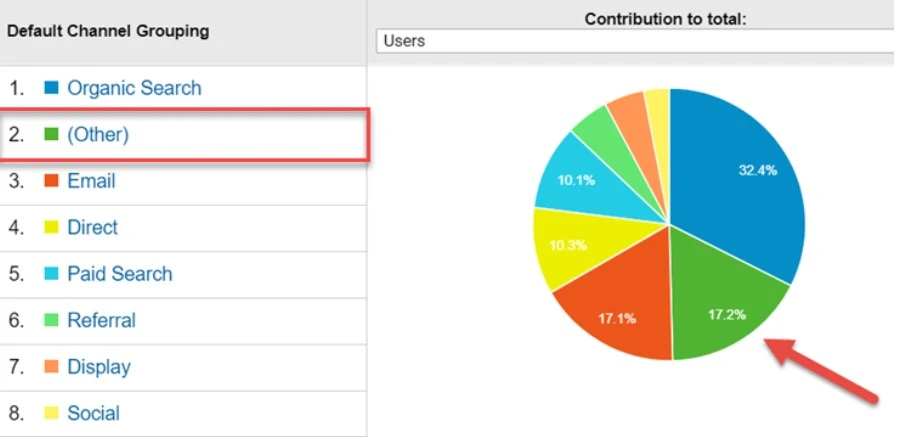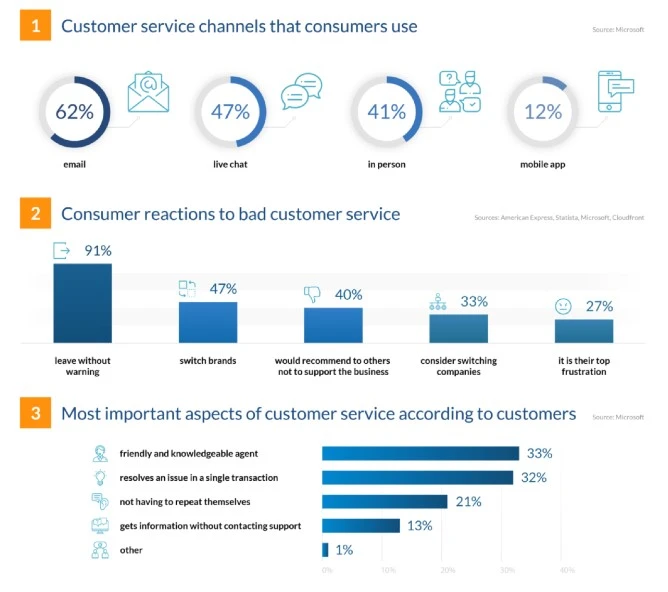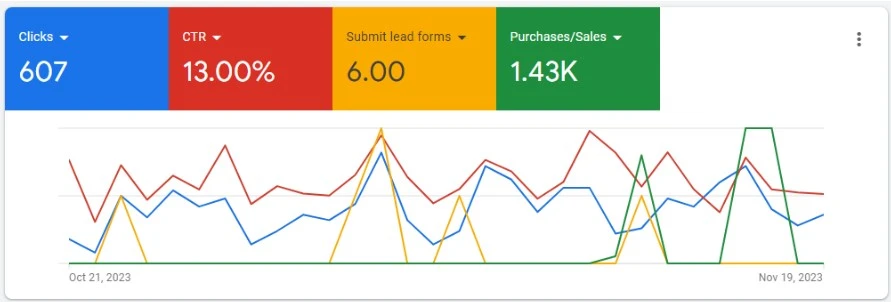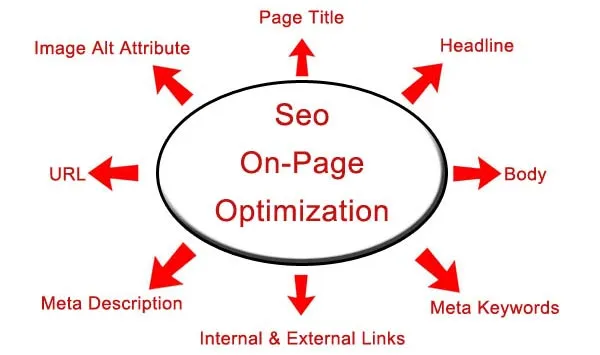
There’s a wealth of information waiting for you in Google Analytics that can transform the way you understand your website’s performance. By focusing on key metrics, you can gain valuable insights into your customers’ behavior, assess your marketing effectiveness, and ultimately drive more leads for your data-driven marketing business. At Mister Nguyen Agency, we believe that mastering these metrics is crucial for optimizing your social media and design brand strategies. Dive into this blog post to learn which Google Analytics metrics you should be tracking for business success.
Understanding Users for Data-Driven Marketing
The first step in optimizing your website’s performance is gaining a clear understanding of who your visitors are and how they interact with your content. Google Analytics provides vital insights into user behavior, allowing you to tailor your strategies to better meet their needs and improve your business outcomes.
Users’ vs Sessions
Users represent unique visitors to your website, while sessions denote the total number of visits, including repeat visits from the same user. For example, if a single customer visits your site three times in one day, Google Analytics counts them as one user but three sessions. By analyzing both metrics, you can gauge the effectiveness of your marketing strategies and audience engagement levels more accurately.
A comprehensive overview of users versus sessions helps you determine whether your content is intriguing enough to generate repeat visits. If the number of sessions significantly exceeds the number of users, it indicates that once customers find your site, they are more likely to return, signifying a successful engagement strategy crafted by Mister Nguyen Agency.
New vs Returning Users
Returning users signify the loyalty of your audience, reflecting the effectiveness of your marketing efforts in promoting brand recognition. Understanding the balance between new and returning users can significantly influence your overall strategy; a higher percentage of new users may indicate successful outreach through social media, while a stable base of returning users can point to effective content that resonates with your customers.
With Google Analytics, you can track the ratio of new versus returning users, helping you understand which part of your marketing efforts effectively draws in leads and converts them into loyal customers. This distinction is crucial for aligning your website content with user expectations and needs, ultimately enhancing your business growth strategy.
Traffic Acquisition

Clearly, understanding how your website attracts visitors is crucial for maximizing your business’s online presence. Google Analytics offers invaluable insights into traffic acquisition, allowing you to determine which channels are most effective in driving potential customers to your site. By monitoring these metrics, you can tailor your marketing strategies to focus on channels that generate the most leads and enhance your brand presence.
Traffic Channels
To effectively analyze traffic acquisition, you should start by examining the various traffic channels reported by Google Analytics. These channels typically include organic search, direct traffic, referrals, paid ads, and social media. Each channel plays a distinct role in how users find your website. For instance, organic search can indicate the effectiveness of your SEO efforts, while social media channels highlight the strength of your brand engagement strategies. By understanding where your traffic originates, you can refine your marketing tactics and increase your website visitors significantly.
Referral Traffic
With referral traffic, you can gain insights into how visitors are finding your website through links on other sites. This metric is important for evaluating the performance of partnerships, online publications, or other websites that link to you. If you notice a substantial amount of referral traffic, it likely indicates that your content is being shared effectively or that you’re engaging in successful collaborations with other brands. Monitoring this traffic helps you understand your website’s reputation and visibility within your industry.
A robust referral strategy can significantly contribute to the growth of your customer base. By identifying which referrers are bringing in the most leads, you can focus on building stronger relationships with those sites or explore similar domains for potential partnerships. This way, not only do you build brand credibility, but you also improve your chances of attracting quality customers interested in your business offerings. At Mister Nguyen Agency, we can help you leverage these insights to enhance your design and marketing strategies effectively.
User Engagement Metrics

You need to keep a close eye on user engagement metrics to understand how effectively your website captivates and retains your visitors. These metrics help you gauge the effectiveness of your content, the relevance of your branding, and ultimately, how well you can convert visits into leads or sales. Engaging your customers is not just about bringing them in; it’s about keeping them interested and encouraging them to take desired actions. In this section, we will explore three key engagement metrics: Bounce Rate, Average Session Duration, and Pages per Session. Each of these metrics provides valuable insights that can help you tailor your website to better meet your business goals.
Bounce Rate
Bounce rate is a critical metric that indicates the percentage of visitors who leave your website after viewing just one page. A high bounce rate can signal that your landing pages are not resonating with your customers or that the content lacks relevance. For example, if visitors arrive on your site and don’t find what they’re looking for, they are likely to exit immediately, resulting in a poor user experience that can negatively affect your overall conversion rates. Keeping this metric in check is vital for any business, as reducing bounce rates can lead to higher engagement and better opportunities for conversion.
To effectively lower your bounce rate, consider optimizing your landing pages by making them more relevant to the traffic you are targeting. This can involve improving the page’s content, enhancing visual appeal through design brand strategies, and even ensuring that your website loads quickly. Keep in mind, an engaged visitor is more likely to navigate further into your site, ultimately leading to improved customer leads for your business.
Average Session Duration
For you as a website owner, understanding your Average Session Duration is key to measuring how engaged your visitors are during their time on your site. This metric reflects the average amount of time users spend on your website, and a longer duration typically suggests that your content is valuable and engaging to your customers. The higher the average session duration, the better the chance that visitors are interacting with your offerings, whether it be navigating through multiple pages, reading blog posts, or making inquiries that may lead to conversions.
Understanding this metric helps you refine your marketing and content strategies. For instance, if you notice a significant drop in session duration, this could indicate that visitors are not finding your content compelling enough, prompting a reassessment of the quality and relevance of what you offer. Aim to create content that captivates your audience’s interest, as this can lead to increased brand loyalty and better engagement metrics across the board.
Pages per Session
Engagement metrics like Pages per Session give you additional insight into how deeply users are interacting with your content. This metric quantifies the average number of pages viewed during a single session on your website. A higher number of pages per session typically indicates that your customers are actively exploring your offerings, which is promising for your business. It suggests that visitors find your content valuable and are motivated to learn more about your brand, products, or services.
Rate of Pages per Session can also help identify effective strategies for engaging your visitors. If customers are frequently visiting multiple pages, this might indicate that your internal linking is effective or that your content is well-organized. On the contrary, if users are only visiting a few pages, it may be time to re-evaluate your site structure and ensure that your calls-to-action are strategically placed to guide users through a meaningful journey on your website. Keep in mind, enhancing these engagement metrics can significantly boost your ability to convert visitors into valuable leads for your business.
Conversion Tracking

Your website’s effectiveness in achieving its goals hinges on understanding conversion tracking. This important aspect of Google Analytics helps you monitor how well your site is performing in terms of generating leads, sales, or any other desired customer actions. By keeping a close eye on conversion metrics, you can gain insights into user behavior and make informed decisions to enhance your business’s performance.
Goal Conversion Rate
Goal conversion rate is a fundamental metric that reveals the percentage of visitors who complete a specific desired action on your website. These actions can range from signing up for a newsletter to making a purchase. By defining clear goals for your business in Google Analytics, you can track how effectively your site turns visitors into customers and leads. A higher conversion rate indicates that your website is engaging users effectively and meets their expectations.
Monitoring and analyzing your goal conversion rate allows you to identify areas of improvement within your marketing strategies and web design. For example, if you find that many visitors are leaving without completing a desired action, it may be time to evaluate your landing pages or the overall user experience. This ongoing analysis is crucial for optimizing your website’s performance and ensuring your marketing efforts yield the best results.
E-commerce Metrics
Conversion tracking in e-commerce is critical for understanding how well your online store is performing. Key e-commerce metrics include revenue, average order value, and conversion rate by product category. These metrics provide valuable insights into sales performance and customer behavior, allowing you to pinpoint which products are your best performers and where improvements can be made.
Another important aspect of e-commerce metrics is the shopping cart abandonment rate. This metric highlights the percentage of customers who add items to their cart but do not complete the checkout process. By analyzing the reasons behind cart abandonment, such as high shipping costs or complicated checkout procedures, you can implement strategies to optimize the shopping experience and encourage customers to finalize their purchases. With Mister Nguyen Agency’s expertise in website design and social media, you can enhance your e-commerce platform, improve conversion rates, and ultimately drive more sales for your business.
Advanced Insights
Many businesses overlook the more nuanced features of Google Analytics that can provide deeper insights into user behavior and preferences. By entering into advanced insights, you can harness data that not only informs your marketing strategies but also enhances user experience and engagement on your website. Here are some key areas to focus on:
- Demographics and Interests
- Behaviour Flow Analysis
- Custom Dimensions and Metrics
Table: Key Advanced Insights
| Insight | Description |
| Demographics | Understand the age, gender, and location of your website users. |
| Interests | Gain insights into the interests and affinity categories of your audience. |
| Behaviour Flow | Visualize the path users take from one page to another on your site. |
| Custom Metrics | Track unique interactions that matter specifically to your business. |
Demographics and Interests
Any effective marketing strategy starts with a deep understanding of your audience. By leveraging demographic insights from Google Analytics, you can tailor your content and strategies to better meet the needs of your customers. For instance, knowing the age and gender of your visitors allows you to craft targeted campaigns that resonate with these groups. Additionally, analytics can provide information about the geographic locations of your users, helping you identify key markets for your products or services.
Moreover, understanding your audience’s interests can dramatically influence your marketing efforts. Google Analytics classifies users into different interest categories, which can assist you in creating compelling content that captures their attention. By aligning your website’s tone, design, and content with what your customers are interested in, you not only enhance user engagement but also improve your chances of converting leads into loyal customers.
Behaviour Flow Analysis
For any business, analyzing the behavior flow of website visitors is crucial for optimizing the user experience. Behaviour flow analysis visually represents how users navigate through your site, showing the most common entry and exit points. This powerful insight allows you to identify where potential customers may be dropping off, as well as what content is engaging them the most. By targeting these areas for improvement, you can create a more seamless browsing experience that keeps your customers engaged.
To effectively utilize behavior flow analysis, you should examine the paths users take from the moment they land on your website to their final actions, whether that be making a purchase, signing up for a newsletter, or browsing multiple pages. This information empowers you to enhance your website design and layout, ensuring that visitors have a clear and engaging journey. By focusing on optimizing these pathways, you enhance customer satisfaction, boost engagement rates, and ultimately drive conversions for your business.
Incorporating advanced insights such as demographics, interests, and behavior flow analysis into your strategy equips you with the knowledge you need to refine your marketing efforts. At Mister Nguyen Agency, we specialize in leveraging these insights to boost your business’s online presence. If you’re looking to optimize your website and its performance, we’re here to help you succeed. Visit us at www.misternguyen.com to learn more.
Custom Metrics and Dimensions

Once again, submerging into the depths of Google Analytics can unlock significant insights tailored to your business’s unique needs. By leveraging custom metrics and dimensions, you have the power to track specific user interactions that standard analytics might overlook. This flexibility enhances your understanding of customer behaviour, allowing you to make data-driven decisions that directly impact your website’s performance and, ultimately, your ability to generate leads.
Creating Custom Metrics
Metrics are imperative for tracking tailored business objectives, providing insights beyond the default settings of Google Analytics. By creating custom metrics, you can measure aspects such as the number of video plays, PDF downloads, or specific time spent on various sections of your site. This allows you to gauge user engagement and adjust your website’s content strategy to better meet your customers’ needs. As you establish these parameters, ensure they are aligned with your overall business goals, whether it’s increasing brand recognition through social media or driving sales on your e-commerce platform.
Tracking Unique User Interactions
Creating custom dimensions enables you to explore deeper into user interactions on your website. For instance, you might want to track which blog articles lead to conversions or how specific marketing campaigns perform among different audience segments. By categorizing users based on their interactions such as their referral source, device, or content type of you can gain more granular insights that help tailor your engagement strategies. This is particularly useful for businesses like yours that thrive on understanding customer preferences to optimize marketing efforts.
For instance, tracking unique user interactions may reveal that customers from social media channels are more engaged with particular types of content on your website, providing invaluable data for future campaigns. You can leverage these insights to focus your marketing resources effectively, ensuring that you cultivate relationships with leads that are most likely to convert into loyal customers. At Mister Nguyen Agency, we understand the importance of analyzing this kind of data, allowing you to enhance your website design and elevate your brand presence.
Final Words
Following this guide on key Google Analytics metrics, you now have a clearer understanding of how to track and analyze your website’s performance effectively. By focusing on important metrics such as user engagement, traffic acquisition, and conversion rates, you can gain valuable insights into the preferences and behaviors of your customers. This approach not only helps in optimizing your website but also in driving the success of your business. Do not forget, data is your ally in making informed decisions that align with your goals.
At Mister Nguyen Agency, we are committed to helping you harness the power of analytics to boost your online presence, enhance your design brand, and maximize your leads through effective strategies in social media, website optimization, and targeted marketing efforts.











